Abstract
Rapid axonal transport in rabbit vagus nerve was studied during and after graded nerve compression. Proteins of the rapid axonal transport were labelled by micro-injection of 3H-leucine into the nodose ganglion and the cervical vagus nerve was subjected to graded compression by a small "mini-cuff" applied directly to the exposed nerve trunk. The results showed that even slight trauma to the nerve, in this model represented by a pressure at 50 mmHg applied for two hours, may induce accumulation of axonally transported proteins at the level of compression. This transport block was, however, reversible within one day. 200 mmHg and 400 mmHg applied for two hours similarly induced a block of axonal transport persisting up to at least one and three days respectively after the compression. Time for recovery of normal transport was correlated with the magnitude of the pressure applied to the nerve. The results indicate that axons may survive, that is not undergo Wallerian degeneration, after blockage of rapid axonal transport persisting at least one day after the compression trauma.
Full text
PDF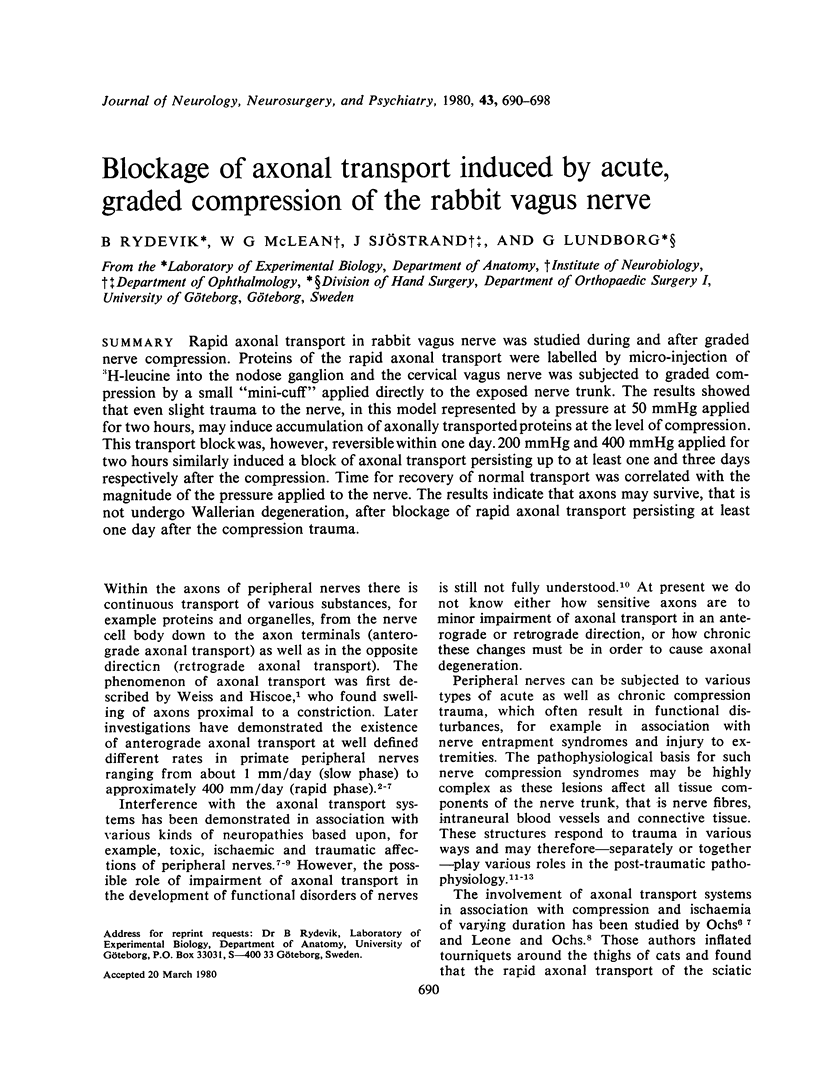
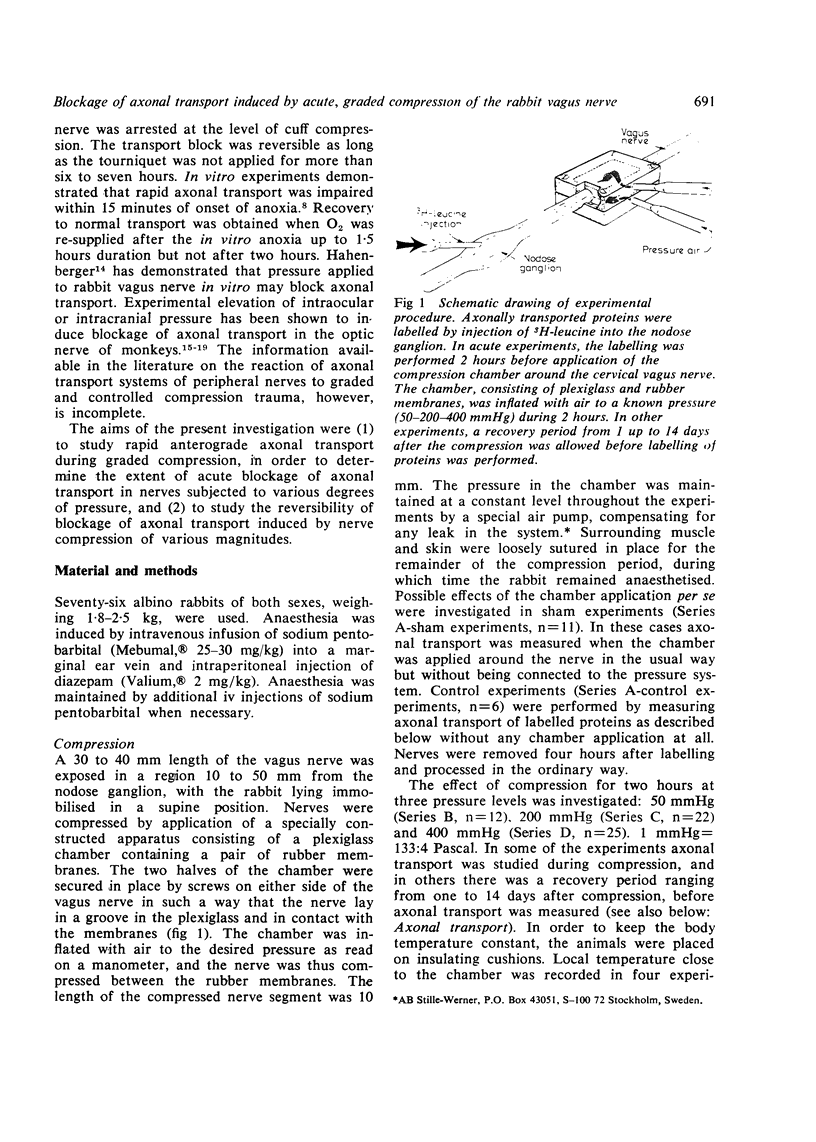
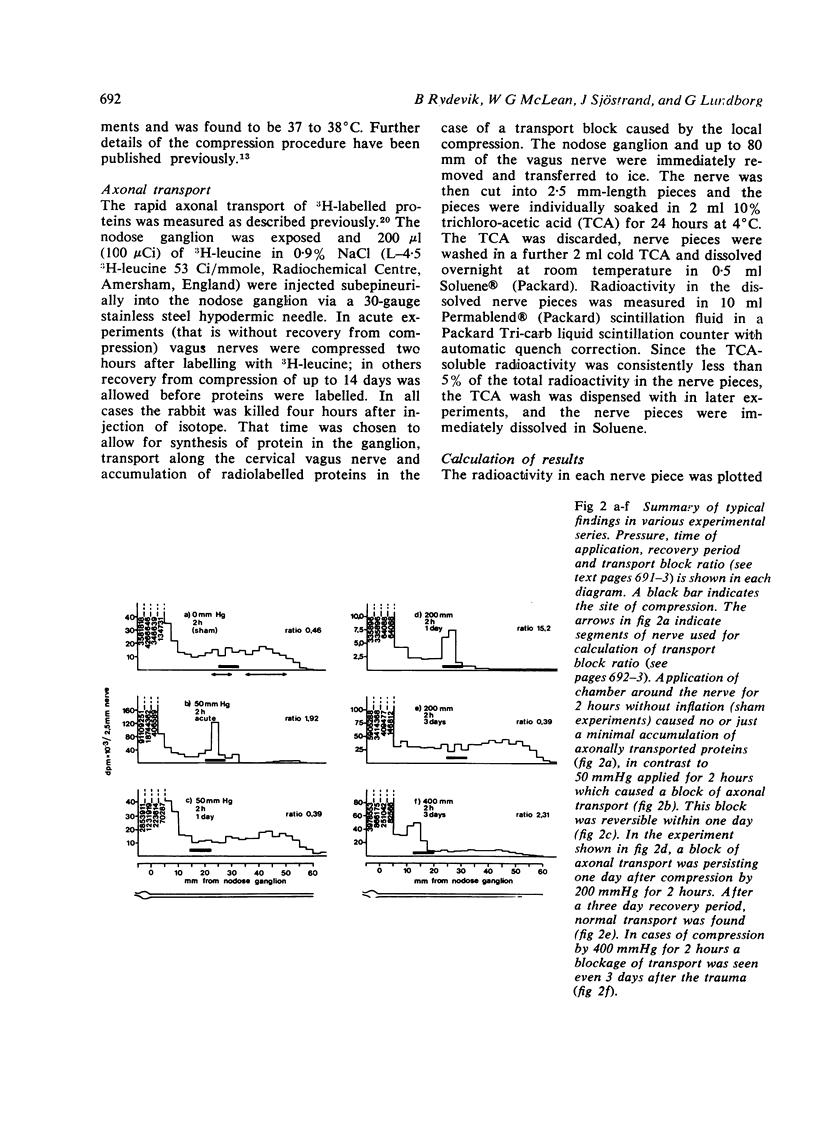
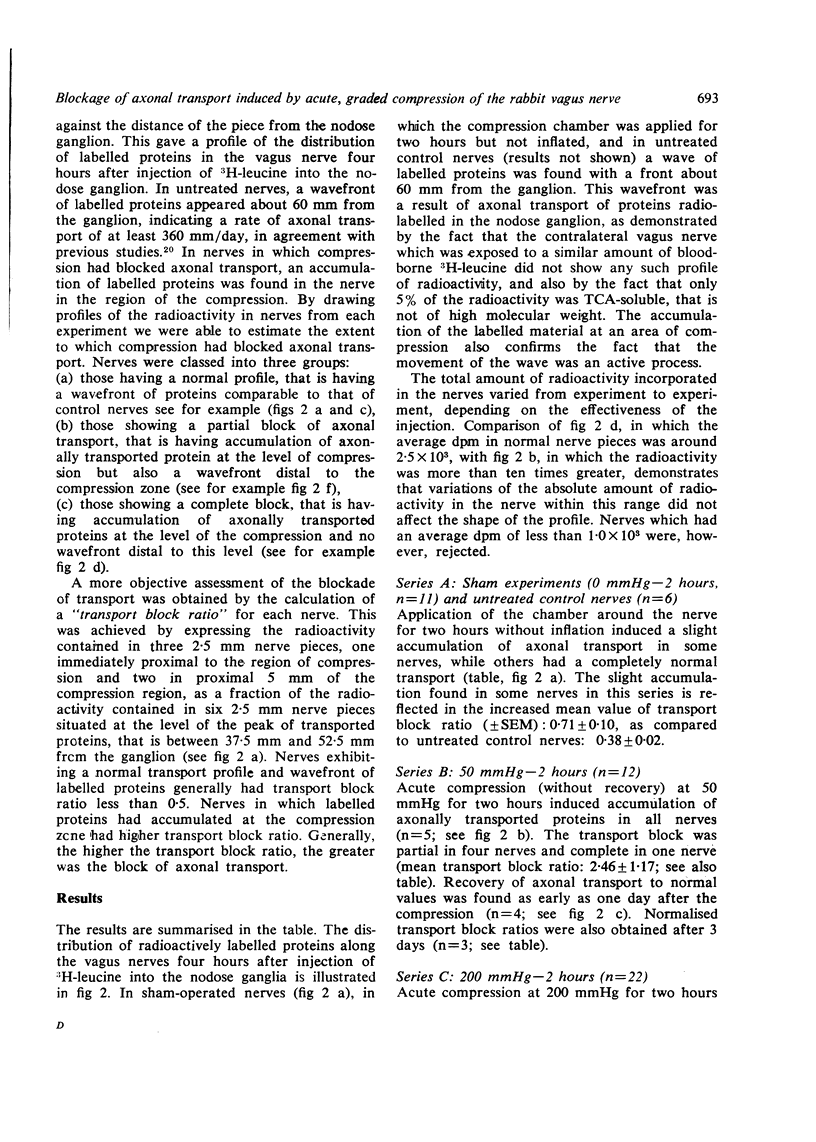
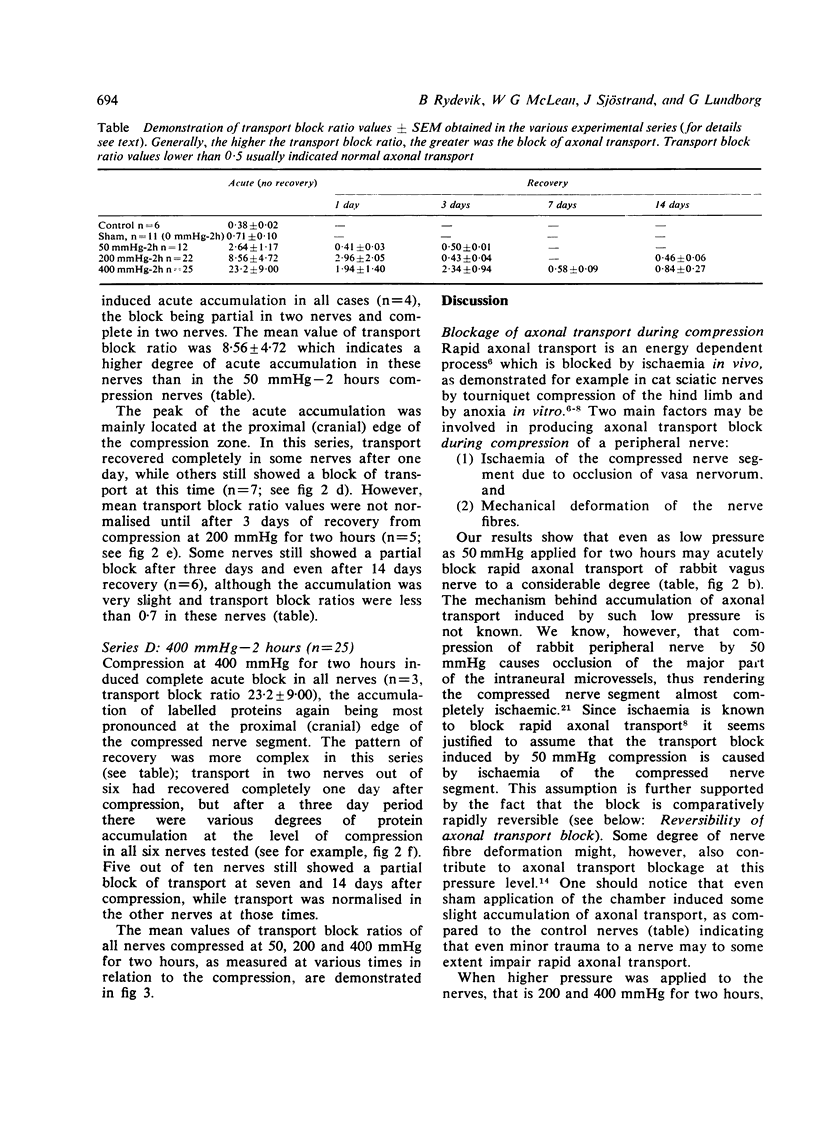
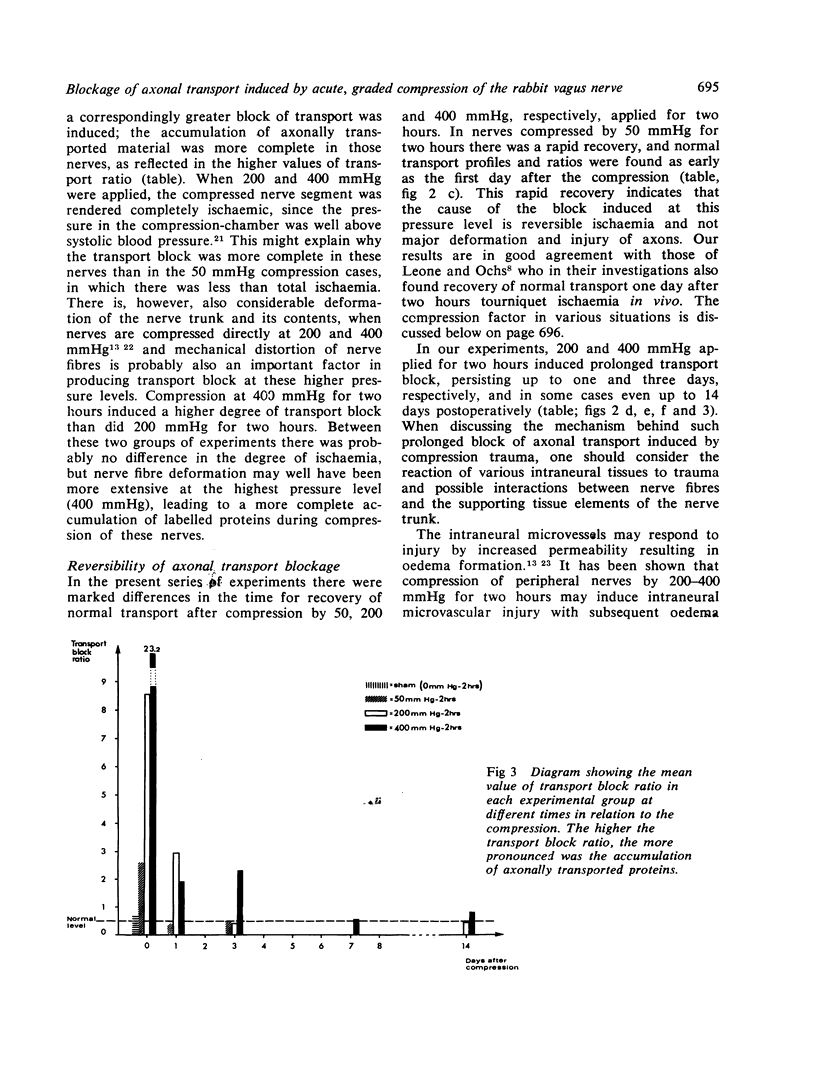
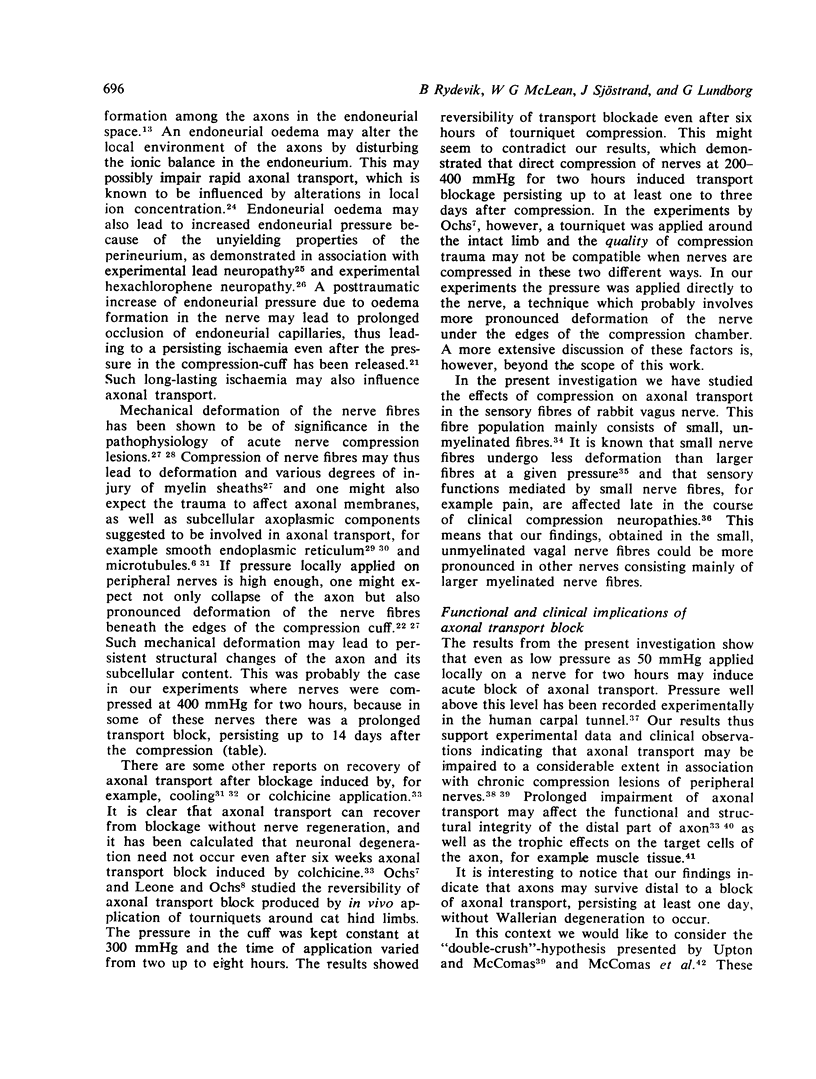
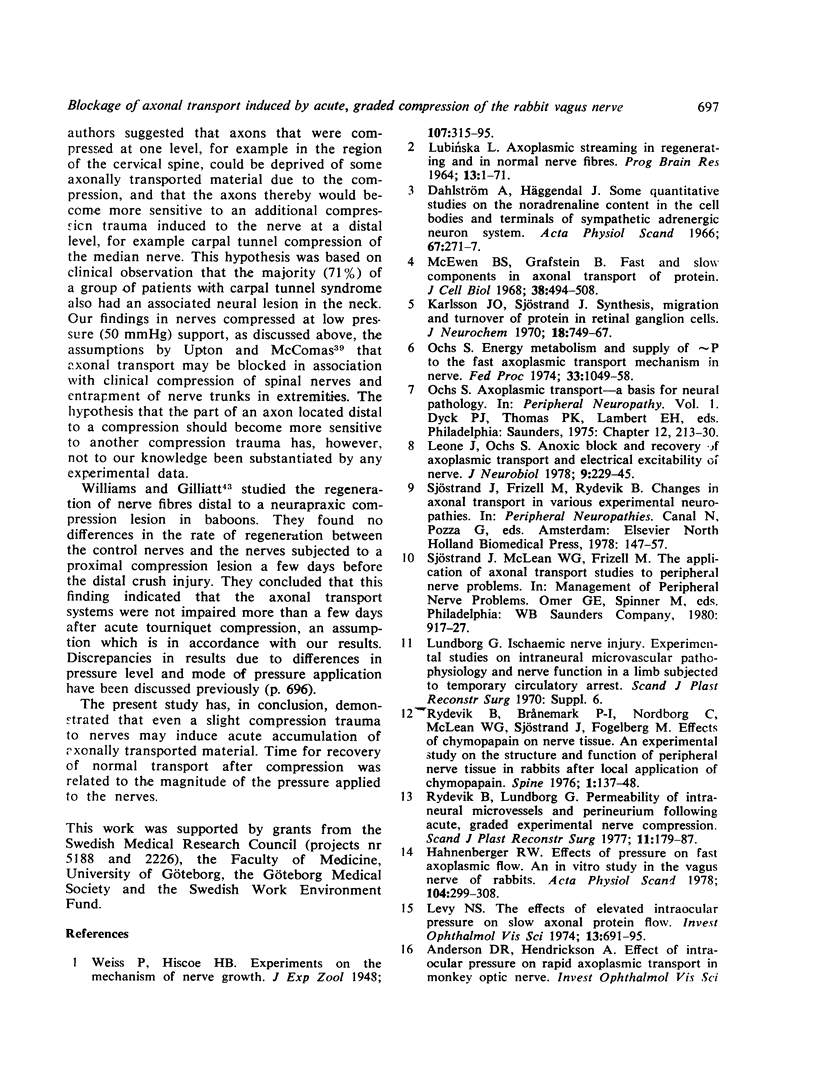
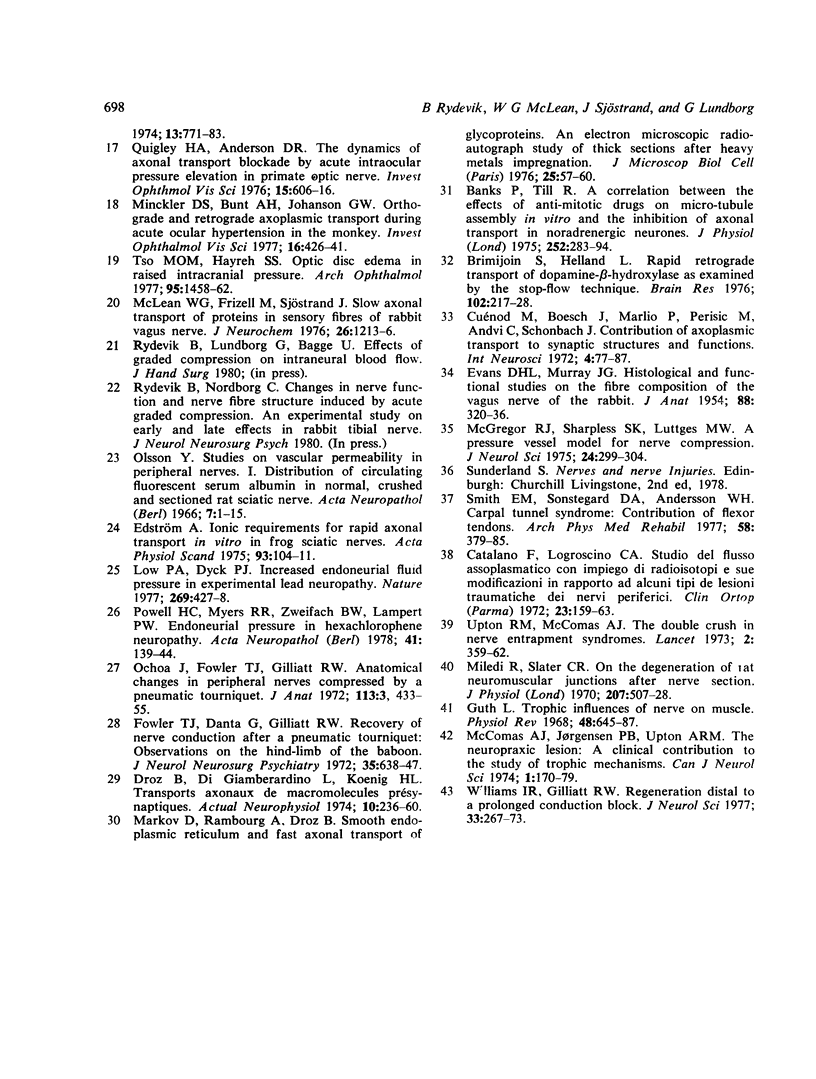
Images in this article
Selected References
These references are in PubMed. This may not be the complete list of references from this article.
- Banks P., Till R. A correlation between the effects of anti-mitotic drugs on microtubule assembly in vitro and the inhibition of axonal transport in noradrenergic neurones. J Physiol. 1975 Oct;252(1):283–294. doi: 10.1113/jphysiol.1975.sp011144. [DOI] [PMC free article] [PubMed] [Google Scholar]
- Brimijoin S., Helland L. Rapid retrograde transport of dopamine-beta-hydroxylase as examined by the stop-flow technique. Brain Res. 1976 Feb 6;102(2):217–228. doi: 10.1016/0006-8993(76)90878-7. [DOI] [PubMed] [Google Scholar]
- Dahlström A., Häggendal J. Some quantitative studies on the noradrenaline content in the cell bodies and terminals of a sympathetic adrenergic neuron system. Acta Physiol Scand. 1966 Jul-Aug;67(3):271–277. doi: 10.1111/j.1748-1716.1966.tb03312.x. [DOI] [PubMed] [Google Scholar]
- EVANS D. H., MURRAY J. G. Histological and functional studies on the fibre composition of the vagus nerve of the rabbit. J Anat. 1954 Jul;88(3):320–337. [PMC free article] [PubMed] [Google Scholar]
- Edström A. Ionic requirements for rapid axonal transport in vitro in frog sciatic nerves. Acta Physiol Scand. 1975 Jan;93(1):104–112. doi: 10.1111/j.1748-1716.1975.tb05795.x. [DOI] [PubMed] [Google Scholar]
- Fowler T. J., Danta G., Gilliatt R. W. Recovery of nerve conduction after a pneumatic tourniquet: observations on the hind-limb of the baboon. J Neurol Neurosurg Psychiatry. 1972 Oct;35(5):638–647. doi: 10.1136/jnnp.35.5.638. [DOI] [PMC free article] [PubMed] [Google Scholar]
- Guth L. "Trophic" influences of nerve on muscle. Physiol Rev. 1968 Oct;48(4):645–687. doi: 10.1152/physrev.1968.48.4.645. [DOI] [PubMed] [Google Scholar]
- Hahnenberger R. W. Effects of pressure on fast axoplasmic flow. An in vitro study in the vagus nerve of rabbits. Acta Physiol Scand. 1978 Nov;104(3):299–308. doi: 10.1111/j.1748-1716.1978.tb06282.x. [DOI] [PubMed] [Google Scholar]
- Karlsson J. O., Sjöstrand J. Synthesis, migration and turnover of protein in retinal ganglion cells. J Neurochem. 1971 May;18(5):749–767. doi: 10.1111/j.1471-4159.1971.tb12005.x. [DOI] [PubMed] [Google Scholar]
- LUBINSKA L. AXOPLASMIC STREAMING IN REGENERATING AND IN NORMAL NERVE FIBRES. Prog Brain Res. 1964;13:1–71. [PubMed] [Google Scholar]
- Leone J., Ochs S. Anoxic block and recovery of axoplasmic transport and electrical excitability of nerve. J Neurobiol. 1978 May;9(3):229–245. doi: 10.1002/neu.480090305. [DOI] [PubMed] [Google Scholar]
- Levy N. S. The effects of elevated intraocular pressure on slow axonal protein flow. Invest Ophthalmol. 1974 Sep;13(9):691–695. [PubMed] [Google Scholar]
- Low P. A., Dyck P. J. Increased endoneurial fluid pressure in experimental lead neuropathy. Nature. 1977 Sep 29;269(5627):427–428. doi: 10.1038/269427a0. [DOI] [PubMed] [Google Scholar]
- Macgregor R. J., Sharpless S. K., Luttges M. W. A pressure vessel model for nerve compression. J Neurol Sci. 1975 Mar;24(3):299–304. doi: 10.1016/0022-510x(75)90249-x. [DOI] [PubMed] [Google Scholar]
- McComas A. J., Jorgensen P. B., Upton A. R. The neurapraxic lesion: a clinical contribution to the study of trophic mechanisms. Can J Neurol Sci. 1974 Aug;1(3):170–179. doi: 10.1017/s0317167100119213. [DOI] [PubMed] [Google Scholar]
- McEwen B. S., Grafstein B. Fast and slow components in axonal transport of protein. J Cell Biol. 1968 Sep;38(3):494–508. doi: 10.1083/jcb.38.3.494. [DOI] [PMC free article] [PubMed] [Google Scholar]
- McLean W. G., Frizell M., Sijöstrand J. Slow axonal transport of labelled proteins in sensory fibres of rabbit vagus nerve. J Neurochem. 1976 Jun;26(6):1213–1216. doi: 10.1111/j.1471-4159.1976.tb07009.x. [DOI] [PubMed] [Google Scholar]
- Miledi R., Slater C. R. On the degeneration of rat neuromuscular junctions after nerve section. J Physiol. 1970 Apr;207(2):507–528. doi: 10.1113/jphysiol.1970.sp009076. [DOI] [PMC free article] [PubMed] [Google Scholar]
- Minckler D. S., Bunt A. H., Johanson G. W. Orthograde and retrograde axoplasmic transport during acute ocular hypertension in the monkey. Invest Ophthalmol Vis Sci. 1977 May;16(5):426–441. [PubMed] [Google Scholar]
- Olsson Y. Studies on vascular permeability in peripheral nerves. I. Distribution of circulating fluorescent serum albumin in normal, crushed and sectioned rat sciatic nerve. Acta Neuropathol. 1966 Sep 1;7(1):1–15. doi: 10.1007/BF00686605. [DOI] [PubMed] [Google Scholar]
- Powell H. C., Myers R. R., Zweifach B. W., Lampert P. W. Endoneurial pressure in hexachlorophene neuropathy. Acta Neuropathol. 1978 Feb 20;41(2):139–144. doi: 10.1007/BF00689765. [DOI] [PubMed] [Google Scholar]
- Rydevik B., Lundborg G. Permeability of intraneural microvessels and perineurium following acute, graded experimental nerve compression. Scand J Plast Reconstr Surg. 1977;11(3):179–187. doi: 10.3109/02844317709025516. [DOI] [PubMed] [Google Scholar]
- Smith E. M., Sonstegard D. A., Anderson W. H., Jr Carpal tunnel syndrome: contribution of flexor tendons. Arch Phys Med Rehabil. 1977 Sep;58(9):379–385. [PubMed] [Google Scholar]
- Tso M. O., Hayreh S. S. Optic disc edema in raised intracranial pressure. IV. Axoplasmic transport in experimental papilledema. Arch Ophthalmol. 1977 Aug;95(8):1458–1462. doi: 10.1001/archopht.1977.04450080168023. [DOI] [PubMed] [Google Scholar]
- Upton A. R., McComas A. J. The double crush in nerve entrapment syndromes. Lancet. 1973 Aug 18;2(7825):359–362. doi: 10.1016/s0140-6736(73)93196-6. [DOI] [PubMed] [Google Scholar]
- Williams I. R., Gilliatt R. W. Regeneration distal to a prolonged conduction block. J Neurol Sci. 1977 Aug;33(1-2):267–273. doi: 10.1016/0022-510x(77)90199-x. [DOI] [PubMed] [Google Scholar]



